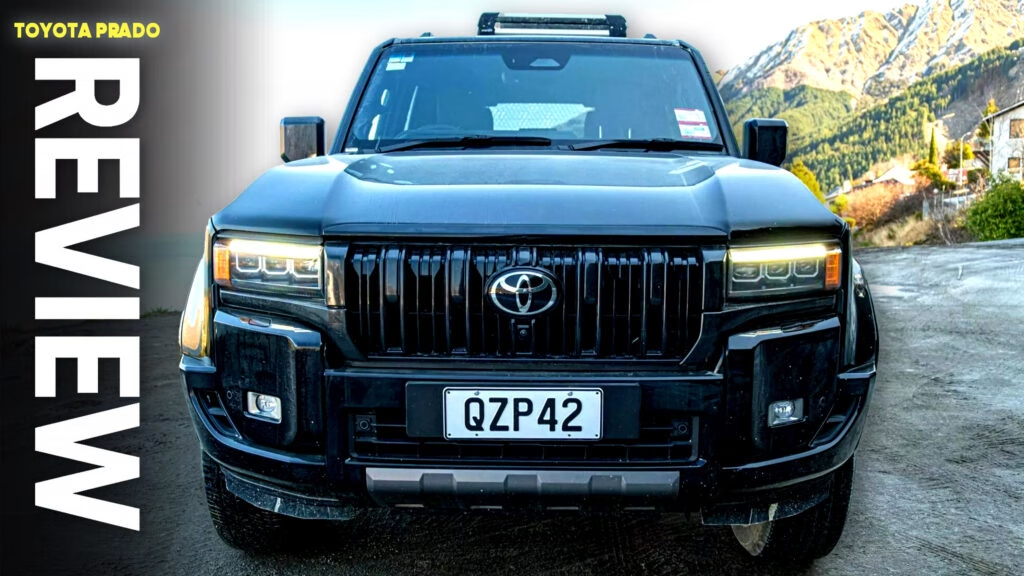What Sets the 2025 Toyota Land Cruiser Prado Apart for Australian Buyers?
Australians have always had a soft spot for the Toyota Land Cruiser, and with good reason. Unlike their American counterparts, Aussies get a smorgasbord of Land Cruiser options: the full-sized 300 Series, the slightly smaller Prado, and the rugged 70 Series that’s been chugging along since the ‘80s. The latest Prado, though, is turning more heads than ever before—and not just for its boxy, retro-inspired looks.
If you’re in the market for a big, family-friendly SUV that can handle school runs, camping trips, and the occasional muddy trail, the new Prado is a compelling alternative to rivals like the Ford Everest and Isuzu MU-X. But what’s it really like to live with? Let’s dig in.
How Does the New Prado’s Engine Stack Up?
Here’s where things get interesting. Under the bonnet, the Aussie-spec Prado sticks with Toyota’s tried-and-true 2.8-litre turbo-diesel four-cylinder. It’s the same workhorse you’ll find in the Hilux and the 70 Series—reliable, yes, but not exactly a fire-breather. You’re looking at 201 horsepower (150 kW) and 368 lb-ft (500 Nm) of torque. That’s a fair bit less than what you get in the American Land Cruiser (with its 326 hp hybrid setup) or the beefier LC300 (304 hp, 516 lb-ft).
Toyota has added a 48-volt mild-hybrid system for a bit of extra efficiency and smoother stop-start operation. The electric motor chips in a modest 11 hp and 48 lb-ft, and the eight-speed automatic transmission is a welcome upgrade over the old six-speed. Still, don’t expect neck-snapping acceleration—0 to 100 km/h takes about 11 seconds. For context, the LC300 will do the same in the mid-7s, and the Ford Everest’s V6 diesel feels noticeably punchier.
Is the Interior Finally Up to Modern Standards?
Absolutely. Step inside, and you’ll notice the Prado’s cabin is lightyears ahead of its predecessor. Dual 12.3-inch displays stretch across the dash, giving it a premium vibe that even the pricier 300 Series struggles to match. Physical climate controls, a chunky steering wheel, and a robust gear shifter remind you this is still a proper 4×4, but the overall design is refreshingly modern.
Space-wise, the Prado isn’t quite as cavernous as the LC300, but it’s more than roomy enough for families. Perks like a wireless phone charger, a cool box for drinks, and wireless Apple CarPlay/Android Auto add to the daily convenience. The only real letdown? Toyota’s infotainment software remains basic—functional, but not flashy.
What’s the Real Story with the Seven-Seat Layout?
Here’s where the Prado’s design stumbles a bit. While you can opt for five or seven seats, the third row in the seven-seat version is a mixed bag. It’s fine for kids, but eats into cargo space—just 182 litres with all seats up, compared to 311 litres in the Isuzu MU-X. Fold the third row down and you get 906 litres, but the seats don’t fold flat due to the hybrid battery under the floor. In rivals like the Everest and MU-X, the third row tucks away neatly, making for a more versatile boot.
If you don’t absolutely need seven seats, the five-seater Prado is the smarter pick. You’ll get more usable cargo space and avoid the awkward seat-folding compromise.
How Does the Prado Drive on and Off the Road?
Let’s be honest: the Prado isn’t going to win any drag races. The engine feels a bit underwhelming, especially when you’re hauling a full load or overtaking on the highway. But once you settle into its rhythm, the Prado’s strengths shine through. The new eight-speed auto keeps things smooth, always seeming to find the right gear without fuss.
Toyota has switched to electric power steering, which is light and makes parking a breeze, but it’s not exactly brimming with feedback. On twisty or icy roads, you might wish for a bit more connection to the front wheels. Still, the adaptive suspension (standard on VX and Kakadu trims) soaks up bumps beautifully, making long drives comfortable for everyone on board.
Off-road? The Prado’s reputation is well-earned. With multiple drive modes for different terrains, a locking centre diff, hill descent control, and low-range gearing, it’s more than capable of tackling rough tracks. The Altitude trim even adds a locking rear diff for extra confidence. While this review didn’t include hardcore off-roading, decades of Land Cruiser DNA mean the Prado is ready for whatever adventure you throw at it.
How Does the Prado Compare on Price and Value?
Pricing starts at AU$72,500 for the base GX and climbs to just under AU$100,000 for the top-spec Kakadu. The VX model tested here sits at AU$87,400 (about US$58,300). Compared to the US Land Cruiser, which starts at $57,200, the Prado offers a lot of bang for your buck—especially when you factor in Toyota’s reputation for reliability and strong resale values.
Against rivals, the Prado’s engine is a step behind in outright power, but the overall package—interior quality, comfort, and off-road ability—makes it a strong contender. If you value peace of mind and a go-anywhere attitude over outright speed, it’s hard to go wrong.
What’s the Bottom Line for Families and Adventurers?
The 2025 Toyota Land Cruiser Prado is a big leap forward where it matters most: comfort, technology, and everyday usability. Sure, the engine could use a shot of espresso, and the seven-seat layout isn’t perfect. But the Prado’s blend of ruggedness, refinement, and reliability is tough to beat.
The big takeaway? Choosing the right Prado isn’t about perfection—it’s about smarter adjustments. Start with one change this week—maybe test drive both five- and seven-seat versions—and you’ll likely spot the difference by month’s end.

